Earth's Interior
1/20
There's no tags or description
Looks like no tags are added yet.
Name | Mastery | Learn | Test | Matching | Spaced |
|---|
No study sessions yet.
21 Terms
Formation of Earth’s Compositional Layers
Gravity and Chemical differentiaition established 3 basic divisions: core, mantle, crust based on DENSITY .
densest: Iron→sink to the center
least denset: outer layer
largest layer: mantle, composed of dark SIlicated minerals(ferromaneisan)
What EQs tell us about the earth interior
seismic waves CURVE because velocity is changed by density(depth)
seismic waves are reflected/change direction/change speed as they hit cross discontinuities(air → water, solid → liquid)
if Earth's density Increases: seismic waves curve down as Density increases. curve up as density decrease.
increase in velocity→ refracted UP
decrease in velocity → refracted DOWN
Therefore, Velocity increases with depth(depth up(toward center), V up)

Moho
curst-matle boundary discovered by Andirijia Mohorovicic
P-wave shadow zone
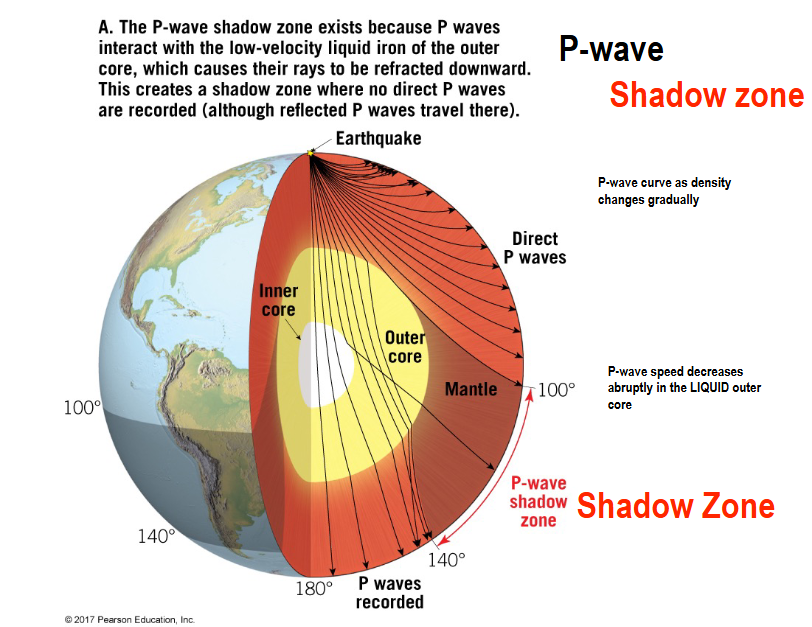
P-waves
travels slow in Core than in Mantle→ core is very different
S-wave shadow zones
because s-waves can not travel through liquid(outer core) → shadow zone in the remaining half of the earth
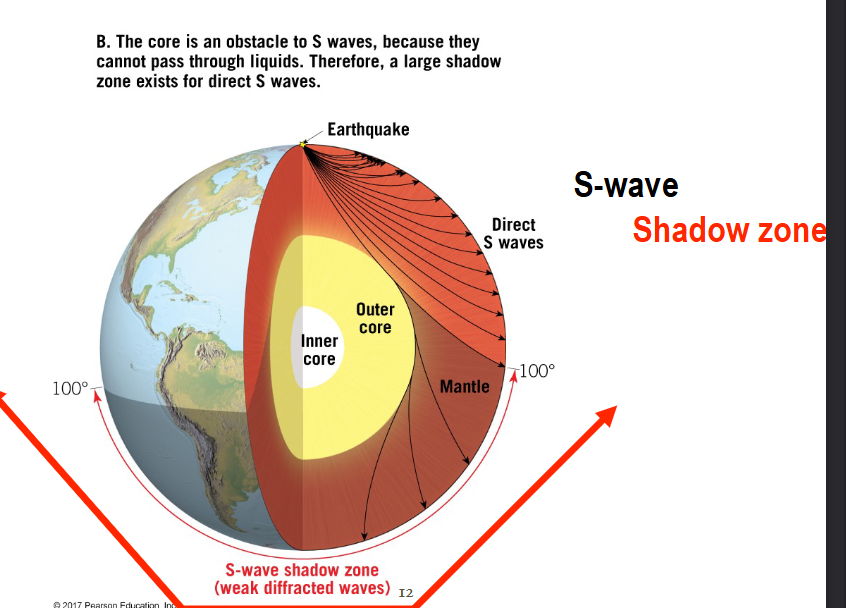
how did we come to the conclusion of earth interior from Waves(Seismic waves):
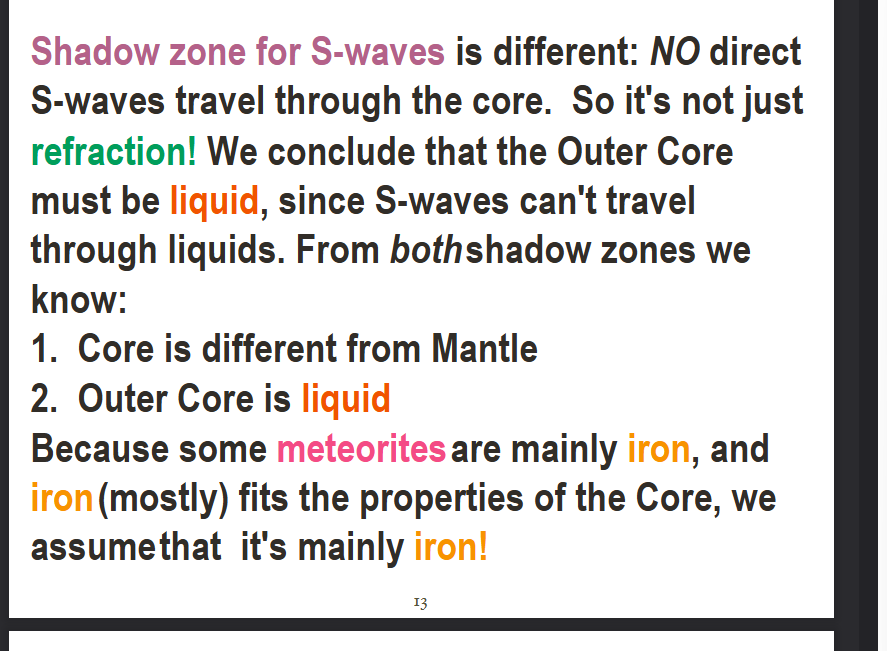
what we also known about earth, beside the interior:
whole earth density = 5.5 g/cm³
density of crustal rock: 2.6-3.3 g/cm³
Moment of Inertia I = 0.334 m/r²
uniform sphere has I = 0.4 m/r²
Heat flows: averages 10^6 cal/sec/cm^
Earth’s lower mantle
The “D” layer: boundary between rocky lower mantle and liquid outer core
cool Region: remnants(small remaining quantity of smth) of subducted lithospheric plates
hot regions: start of deep mantle plumes
The “D” layer:
boundary between rocky lower mantle and liquid outer core
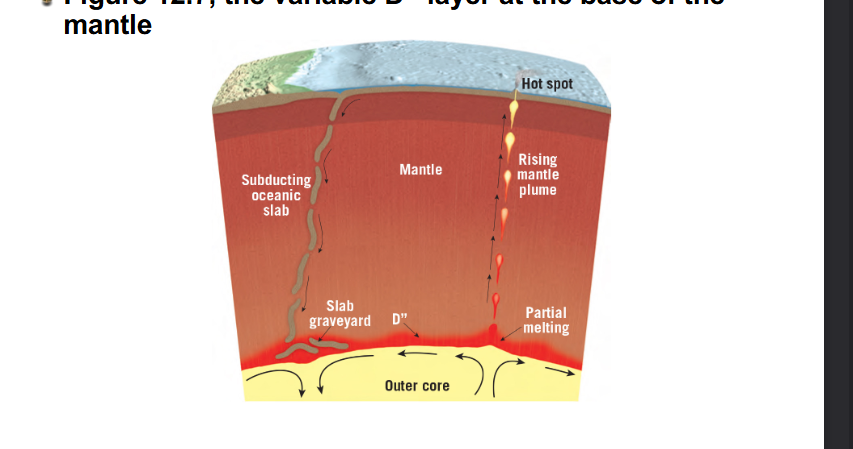
cool Region:
remnants(small remaining quantity of smth) of subducted lithospheric plates
hot regions:
start of deep mantle plumes
from facts, we guess
-core 90% of iron:
evidence: denisty, moment of Inertia, P -waves, velocities meteorites
outercore is liquid:
S-waves shadow zones. but also consistent with Earth’s magnetism. we think magnetism arise from convection currents in the outercore.
Mantle is mainly MG, Fe, Si, O with olivine in upper part, denser minerals lower down
evidence: p,s waves velocities, solar abundances, meteorites, density, moment of inertia, experiments on candidate of minerals, xenoliths(piece of rock inside another rock)
Oceanic crust is mainly basalt:
drilling, p,s waves velocities, moho
Continental crust is between baslt and granite:
evidence: moho
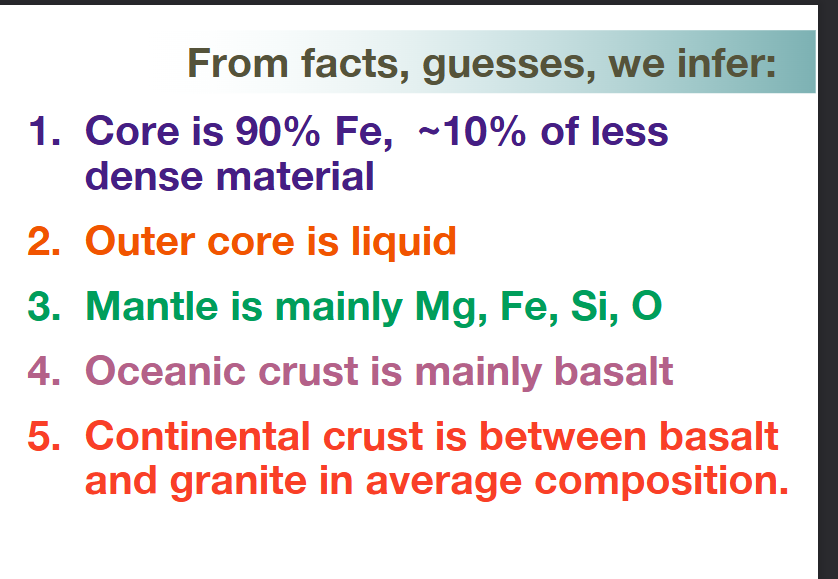
gravity
tell us about ISOTASY
stronger at poles, weaker at equator.Continenets are higher than oceran floor because they are less dense
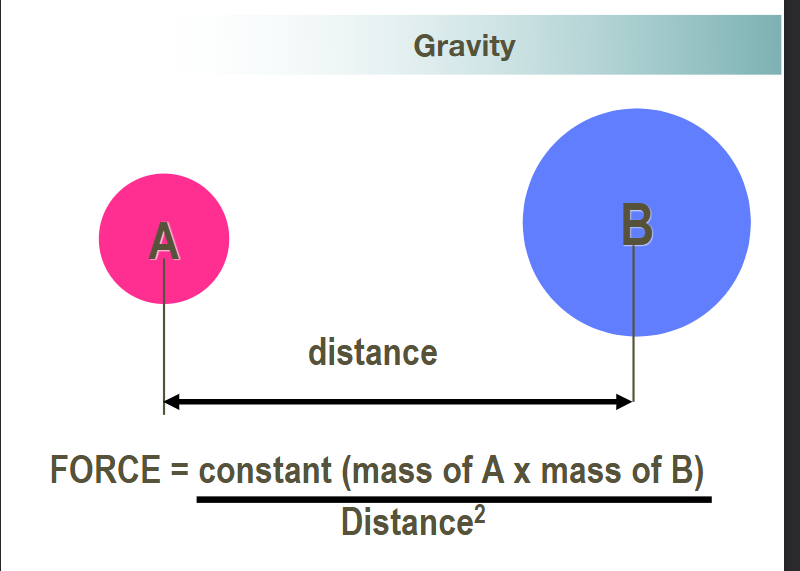
Isostatic adjustment and ice ages

isostatic adjustment
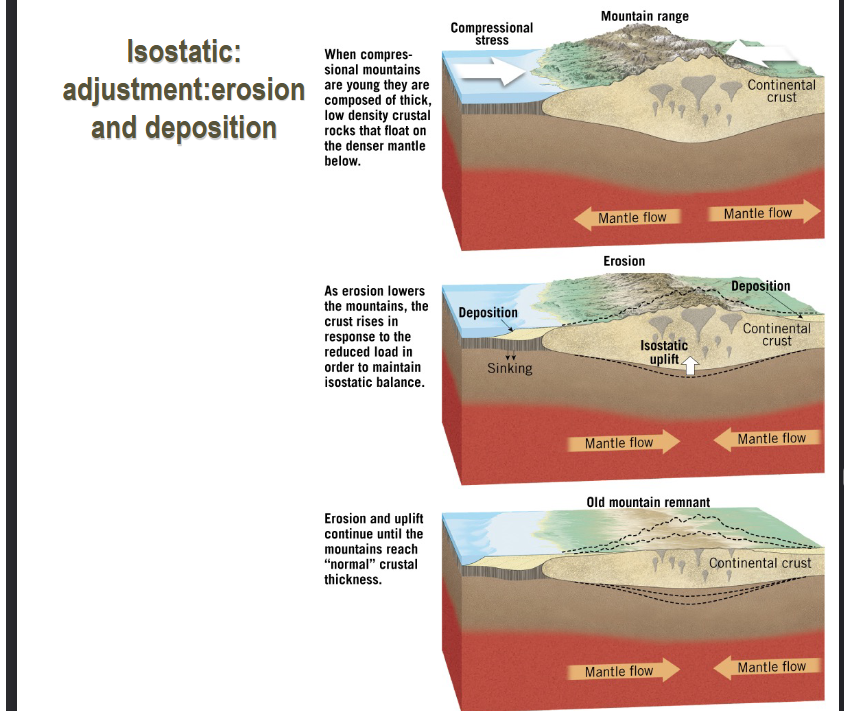
Earth’s magnetism
behaves approximately like a bar magnet. but the core is too HOT to be a permanet magnet. Explained by Convection curents in the liquid Outer core: DYNAMO Theory
paleomagnetism
dating rock using magnetic field
evidence the that earth’s magnetic field periodically reversed direction
evidence that continent have moved
sea-floor spreading
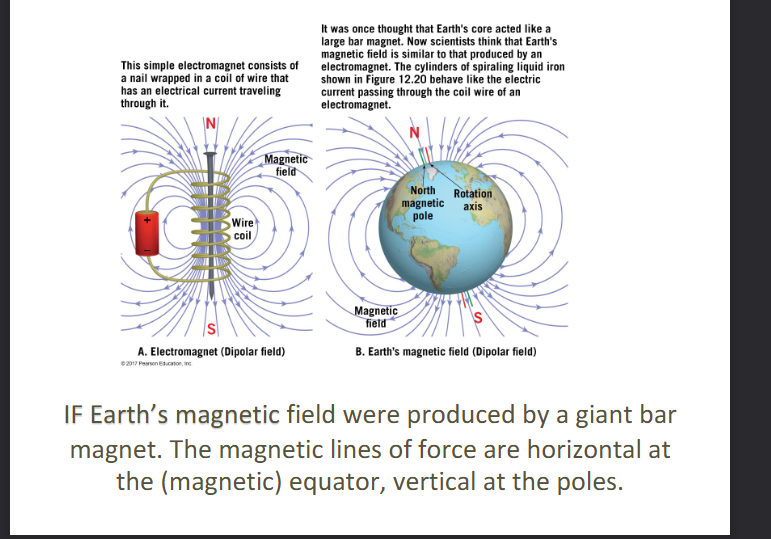
Earth’s internal hear engine
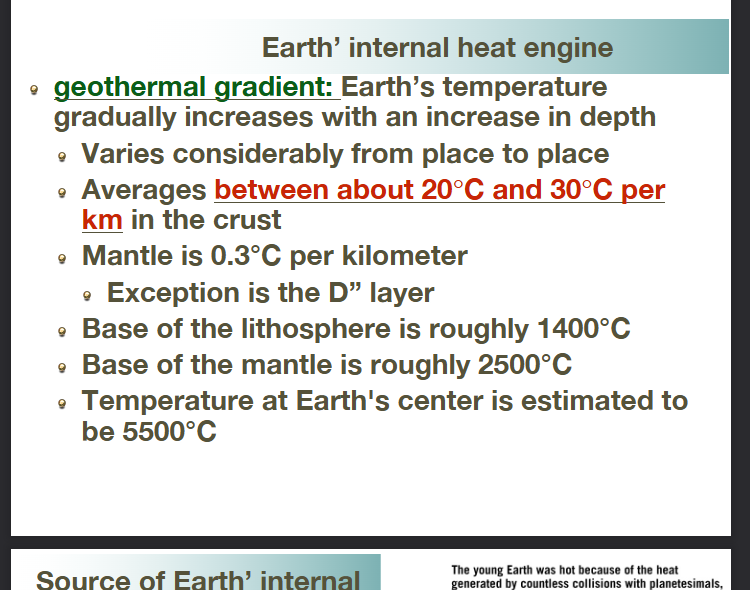
heatflow in the the curst
“conduction“
conduction poor for most rocks
mantle convection
there is no large change in temperature
must have an effective method if transmitting hear from the core outward